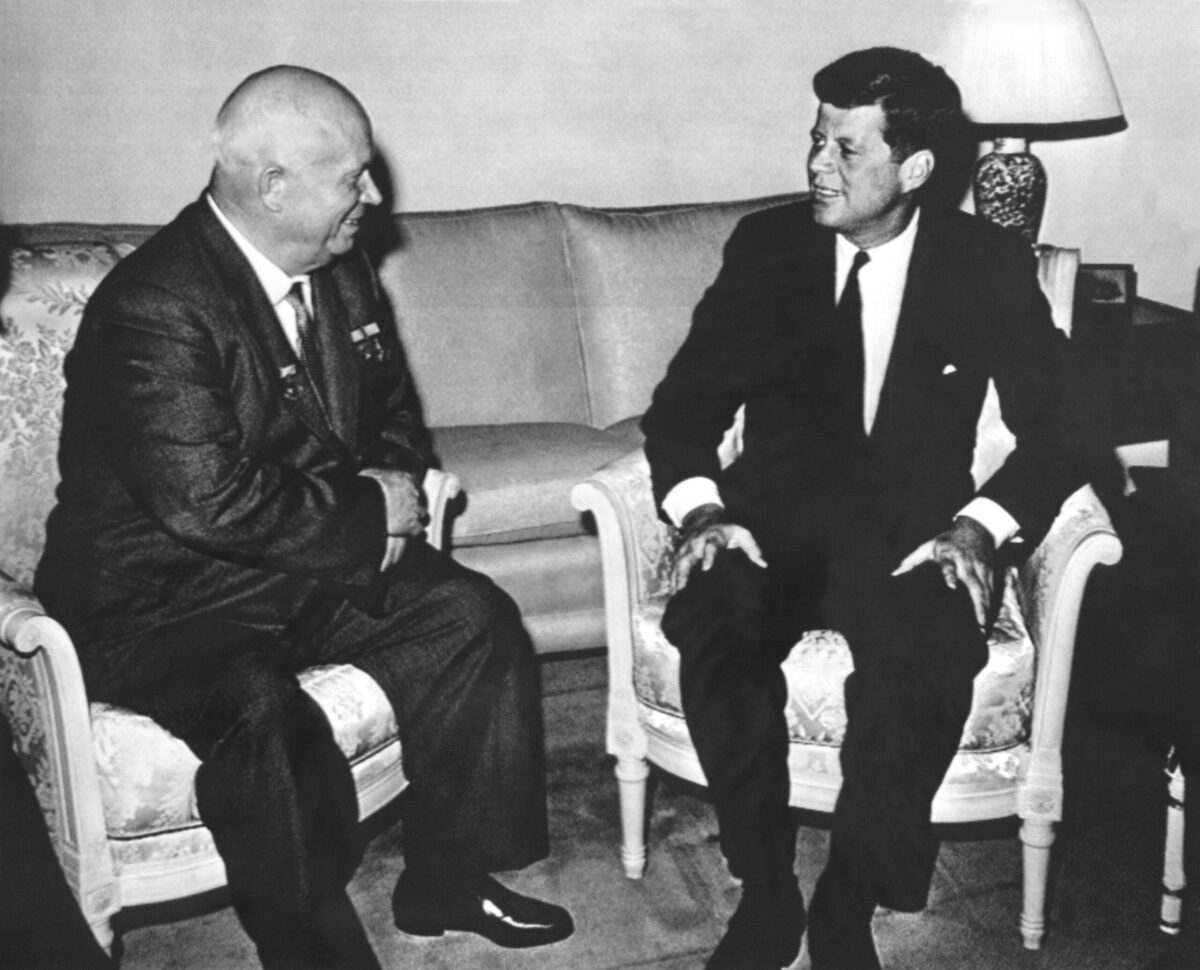On Wednesday, February 3, the U.S. and Russia extended an uneasy truce over nuclear proliferation.
The New Strategic Arms Reduction Treaty, or New START, “is the sole arms control treaty in place between Washington and Moscow following former President Donald Trump’s withdrawal from the Intermediate-Range Nuclear Forces, or INF, treaty,” reports CNBC.
Washington and Moscow currently possess the lion’s share of the world’s nukes — and the New START seeks to impose limits to the nuclear arsenals of both nations. The latest limitations are among a series of treaties that began in the latter half of the 20th century and have roots in the 1962 Cuban Missile Crisis.
Americans are used to the narrative that on October 16, 1962, President John F. Kennedy and his team of advisors were blindsided by the news that the Soviet Union, without provocation, were installing nuclear-armed medium- and intermediate-range ballistic missiles off the Florida coast in Cuba. A gambit,” writes The Atlantic, “that forced the United States and the Soviet Union to the brink of nuclear Armageddon.”
After a tense 13 days, the Soviets blinked, and a nuclear holocaust was averted. Or so the American account goes.
In a three-part memoir, Khrushchev Remembers, first published in 1971, the former Soviet leader counters this perception — detailing life under Stalin and the key years of the Cold War.
In his memoir, excerpted in LIFE magazine in January 1971, Khrushchev writes that the 1962 crisis was a “triumph of Soviet foreign policy and a personal triumph.”
“No Russian leader — until now — ” writes the editors of LIFE “has addressed history with intimate and personal reminiscences spanning his life and that of the Soviet Union itself.”
And while the New York Times reports that “it would take a small book to list the omissions, distortions, and plain mistakes in Khrushchev Remembers,” the memoir remains one of the first elucidating texts about the missile crisis that came out from behind the Iron Curtain.
At the time of the crisis, the nuclear balance heavily favored the United States. By that year the U.S. possessed “about nine times as many nuclear weapons as the U.S.S.R.,” writes The Atlantic. Furthermore, the quality and deployment capability of the U.S. arsenal was also far superior to that of the Soviets, a fact that Khrushchev was keenly aware of.
In the memoir, Khrushchev recalled that while on a visit to Bulgaria in May 1962, “[O]ne thought kept hammering away at my brain: what will happen if we lose Cuba?”
His solution — “[I]nstall nuclear warheads in Cuba without letting the United States find out they were there until it was too late to do anything about them”— was a tit for tat trade off and sent the world hurtling towards Armageddon.
By 1962 the Soviet leader had deemed Kennedy’s deployment of the Jupiter missiles in Turkey an “intolerable provocation,” later telling American journalist Strobe Talbott that Americans “would learn just what it feels like to have enemy missiles pointing at you; we’d be doing nothing more than giving them a little of their own medicine.”
“According to the version of events propagated by the Kennedy administration,” writes The Atlantic, “(and long accepted as historical fact), Washington unequivocally rebuffed Moscow’s offer and instead, thanks to Kennedy’s resolve, forced a unilateral Soviet withdrawal.”
However, in the end, Kennedy had secretly accepted the quid pro quo missile swap that Khrushchev himself proposed on October 27. A fact that only came to light in the late 1980s and after Khrushchev’s death in 1971.
Both leaders, clearly shaken by the apocalyptic possibilities avowed for greater nuclear deterrence. In 1972, both Washington and Moscow signed the 1972 Anti-Ballistic Missile (ABM) Treaty and then seven years later, the Strategic Arms Limitation Treaty (SALT) I and SALT II, in an attempt to curb nuclear proliferation.
The agreement signed this February simply follows a history of point, counterpoint agreements that were set in place by the 1962 crisis.





